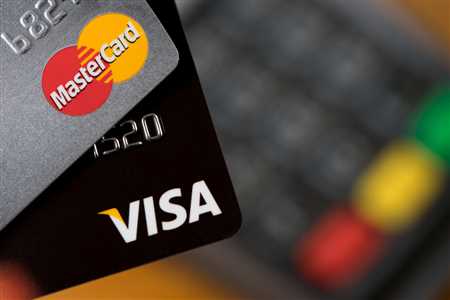

In today’s fast-paced world, consumers are presented with a plethora of financial tools that facilitate transactions seamlessly. As technology evolves, the methods available for transferring funds continue to grow and diversify, offering users a variety of choices for their fiscal needs. Understanding the differences and functionalities of these tools is essential for making informed decisions.
Choosing the right financial solution can significantly affect one’s shopping experience, security, and overall convenience. While some methods boast widespread acceptance and reliability, others cater to specific audiences, providing unique benefits tailored to different preferences. A comprehensive comparison reveals distinct characteristics that could influence users in their selection process.
By analyzing various methods available in the marketplace, consumers can gain insights into the advantages and limitations each presents, ensuring that they select the most suitable option. This examination not only aids in enhancing day-to-day transactions but also equips individuals with the knowledge necessary to navigate the evolving landscape of financial services with confidence.
This section delves into the advantages offered by two significant card types, focusing on how they cater to users’ needs. By examining their unique features and capabilities, we can understand their appeal and practicality for consumers in various scenarios.
One of the primary benefits of these specific cards is their strong emphasis on budget management. Users are often required to maintain a balance, fostering responsible spending habits. This characteristic can be especially advantageous for individuals looking to track expenses effectively.
Moreover, both card types frequently come with enhanced security features, providing users with peace of mind during transactions. This added layer of protection is crucial in today’s digital landscape, where fraud prevention is a priority for many cardholders.
Additionally, these cards are commonly accepted across a wide range of merchants, ensuring that users can make purchases without significant limitations. This versatility makes them appealing for those who wish to maintain a convenient shopping experience.
In terms of fees, holders often find that the costs associated with these cards are relatively low compared to traditional credit cards. This financial efficiency can be a significant factor for budget-conscious consumers who prioritize minimizing expenses.
Ultimately, assessing the benefits of these cards allows potential users to make informed decisions that align with their financial strategies and lifestyle preferences.
When comparing different financial instruments, it’s essential to understand the characteristics that differentiate them. Each type offers unique features that cater to various user preferences, behaviors, and circumstances. Recognizing these distinctions can help individuals make informed decisions based on their specific needs.
One significant difference lies in the level of flexibility and acceptance across merchants. Some cards are more widely recognized globally, making them a preferred choice for travelers and online shoppers. Additionally, the functionality associated with specific cards can influence their utility. For example, certain options may provide enhanced security measures, which can be beneficial in safeguarding against unauthorized transactions.
Another aspect to consider is the type of transactions they support. Some may allow for offline purchases while others focus on digital transactions, thus aligning with the shifting landscape of consumer behavior. Furthermore, the fee structure and associated costs can vary significantly, affecting the overall experience and value for users. Understanding these variances enables consumers to choose a financial tool that aligns with their lifestyle and spending habits.
The landscape of financial transactions is influenced by various demographics that shape consumer preferences. Understanding who uses specific brands can provide insights into their popularity and market reach. Different groups tend to gravitate towards certain card types based on factors like age, income level, geography, and lifestyle choices.
Younger audiences, especially those who are just entering the workforce, often prefer cards with lower fees and easier approval processes. On the other hand, older consumers may favor more established options that offer broader acceptance and rewards programs. This difference in preference highlights the need for providers to cater to distinct age groups to maximize their user base.
Geographic trends also play a significant role. In some regions, one type of card might be more widely accepted, leading to higher usage rates among local populations. Cultural factors and economic conditions can further affect the adoption of specific financial instruments, making it essential to analyze user behavior in different markets.
Ultimately, understanding user demographics and popularity can assist stakeholders in making informed decisions about product offerings and marketing strategies, ensuring they meet the evolving needs of consumers.
This section highlights the unique characteristics and availability of different card types that facilitate transactions in various environments. Understanding these attributes is essential for making informed choices, especially for consumers and businesses alike.
When considering various card brands, several features stand out:
Accessibility also plays a crucial role in determining which card to utilize:
In conclusion, both essential characteristics and accessibility features play significant roles in the overall utility of different card types, allowing users to select the most suitable option for their individual needs.
In the landscape of financial transactions, there exists a diverse range of methodologies that cater to the needs of consumers and businesses alike. These mechanisms play a crucial role in facilitating seamless exchanges, ensuring that individuals have the flexibility they require for their financial engagements.
Visa and MasterCard represent prominent players in this realm, each offering unique features and services tailored to enhance user experiences. Both entities provide a variety of cards designed to meet different preferences, whether one is looking for convenience in everyday purchases or seeking enhanced security for online transactions.
With their extensive networks, these giants enable users to transact globally, making them a reliable choice for various financial operations. Additionally, they frequently incorporate innovative technologies that lay the groundwork for secure and swift exchanges, addressing modern consumer demands effectively.
Understanding the distinctions and capabilities of these services can empower users to make well-informed decisions tailored to their individual needs.
The reach and access of various transaction methods can significantly influence their adoption and usability for consumers across different regions. Understanding how widely accepted these financial instruments are aids users in selecting the right tools for their needs.
Several factors contribute to the global presence of different brands:
In many parts of the world, users will find one brand predominates, thanks to extensive networks and strategic collaborations. Nevertheless, the landscape is continually evolving, influenced by technological advancements and changing consumer expectations.
The choice between different transaction methods ultimately depends on individual needs, trends in specific locales, and the overall ecosystem in which they operate.
Understanding the reach and usability of various card types is essential for consumers and businesses alike. The embrace of different transaction methods varies significantly across geographical regions and merchant types. This section delves into how widely accepted these particular cards are and where users are most likely to utilize them.
In many parts of the world, a discernible preference exists for certain card types, impacting their acceptance at retail outlets, online platforms, and service providers. Certain cards may enjoy broader acceptance due to their established networks and partnerships with financial institutions, while others might be limited to specific markets or sectors. Awareness of these trends helps users make informed decisions about which card to carry.
Furthermore, the landscape of acceptance can change based on local regulations, consumer behavior, and technological advancements in the financial sector. Understanding these nuances aids individuals in navigating the complexities of commerce in various locations, enhancing their purchasing flexibility and convenience.
In today’s digital landscape, safeguarding personal information during transactions is crucial. Financial institutions employ a variety of strategies to enhance security and minimize fraudulent activities. Understanding these protective measures can provide users with greater confidence while managing their finances online.
One of the primary techniques utilized is encryption, which protects data by converting it into a coded format during transmission. This ensures that sensitive information remains secure and inaccessible to unauthorized individuals. Furthermore, tokenization adds an additional layer of security by replacing sensitive data with unique identification symbols that retain essential information without compromising security.
Moreover, many organizations implement real-time fraud detection systems. These advanced technologies analyze transaction patterns and behaviors, enabling swift identification of any suspicious activities. If a transaction appears unusual, it can trigger alerts for further verification, thereby preventing unauthorized access and potential losses.
Regular monitoring of accounts is another vital component of a robust security strategy. Users are encouraged to frequently check their statements and reports for discrepancies or unfamiliar transactions. Early detection is key to mitigating risks and counteracting the impacts of potential fraud.
Lastly, institutions also emphasize the importance of customer education. By informing users about safe practices, such as choosing strong passwords and recognizing phishing attempts, financial entities empower individuals to take an active role in their own protection.